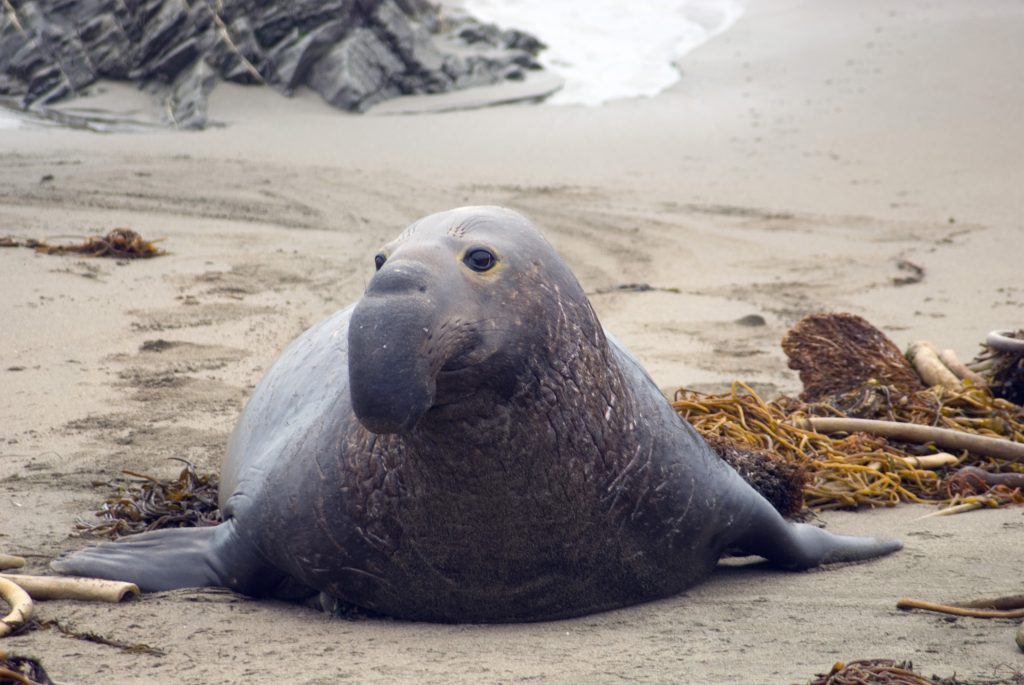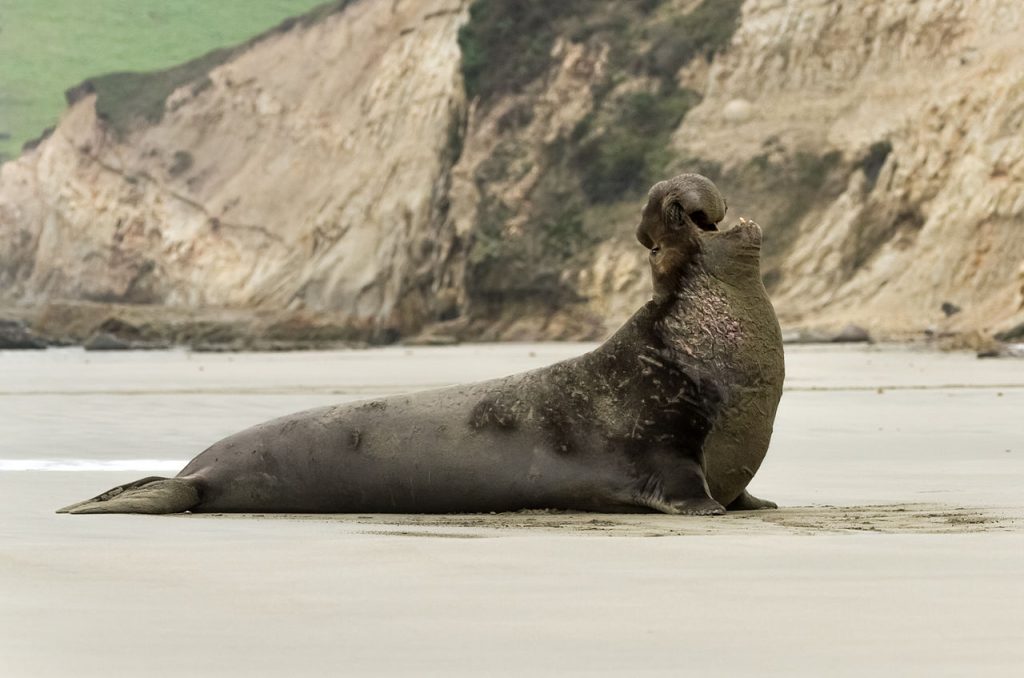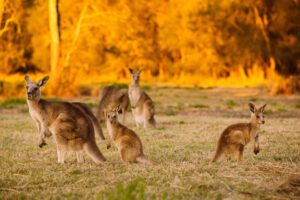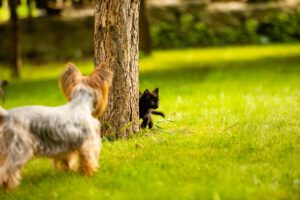The Elephant seals nose is used in producing extraordinarily loud roaring noises, especially during the mating season. The largest known bull elephant seal was 6.7 metres in length and weighed 3400 kilograms (about four tons). Therefore the Elephant seal is one of the largest members of the order Carnivora.
Elephant seals are shielded from cold by their blubber, much more than by fur. The skin on top of this blubber and its hair molts. It has to be re-grown by blood vessels reaching through the blubber.

When this process is occurring, the seal is susceptible to the cold, and must rest and molt on land, in a safe place called a ‘haul-out’. The type of molt which an elephant seal undergoes is a catastrophic molt. While this is taking place, the bulls actually cease fighting with one another.
The elephant seal is almost entirely aquatic, coming ashore primarily to breed. Its range is mostly in warm waters. Elephant seals presumably feed in deep water and eat squid, and fish, including small sharks and rays. They can fast as long as 3 months.
The seals may be solitary at sea, but become very social on the beach. Even during nonbreeding times of the year, they will lie close together on the sand. The males arrive at rookery sites in early December and remain throughout the breeding season without going to sea to feed. Because they move slowly and awkwardly on land, the males cannot defend large territories or large numbers of females.

The female Elephant seals arrive at the rookeries (breeding grounds) in late December. Elephant seals give birth within a week, usually to a single pup. Gestation lasts about 350 days.
The greatest threat to the young pups is the heavy-bodied adult males, which totally ignore the presence of the pups and sometimes crush them. Female Elephant seals will bite and sometimes kill pups that are not their own.














